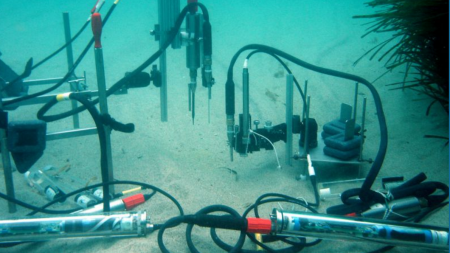December 16, 2016 – Carbon capture and sequestration (CCS) involves extracting carbon dioxide (CO2) and other greenhouse gases (GHGs) from industrial processes and burying the carbon underground. Deep shale and sandstone formations are considered the best places for this type of storage. But what about sub-sea sediments and rock formations? Are these safe places for CCS? Can they be monitored to ensure the CO2 doesn’t escape into the ocean.
The International Energy Agency believes that the CO2 emissions from the energy industry, representing one-third of all human-generated GHGs, can be captured using CCS technology. Where to store the CO2 such as in sub-sea formations is a solution with its own particular challenges. To determine the viability of the storage option scientists plan an experiment to pump CO2 into the North Sea ocean floor and monitor any seepage. The total amount being injected is one ton. A suite of sensors will monitor the underwater site sniffing for traces of the gas.
The unknowns about CCS are all long term. We don’t know what the risks are over centuries. Will the gas stay permanently sequestered or will it ultimately leak out to once more contribute to global warming? The scientists believe that leakage from an undersea reservoir will be insubstantial. But no one knows just how much may emerge through seepage and how it will be spread by currents.
The experiment to be deployed in 2019 is being run by the National Oceanography Centre in Southampton, UK. It will deploy hydro-acoustic sensors to hear the bubbles of gas and distinguish them from gas emanating from other sources such as fish bladders. Chemical sensors will distinguish between organic and inorganic CO2 sources. The technology deployed is an optode, a lab-on-a-chip, capable of picking up trace chemicals and acidity changes in the ocean water above the injection site which is being considered for future permanent carbon storage.
Douglas Connelly, who is running the project, notes that this will be the first time seafloor sediments are involved, not laboratory simulations. He states, “We’re going to try to find out what would happen in the real world.”
















